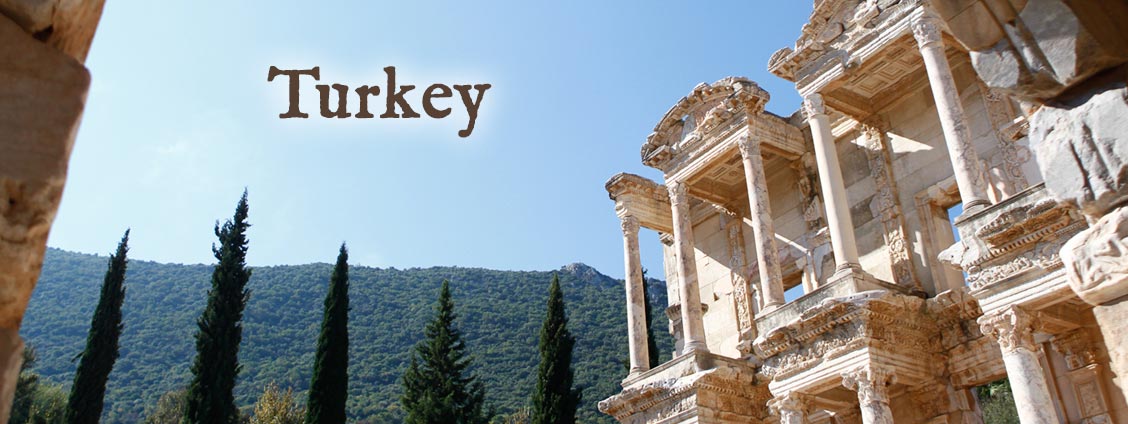Israel Study Tour - Brian Haynes
June 2-13, 2014
Subscription options are no longer available for this tour.
Help support our friends in Israel in their time of need.
Into the Wilderness
When I learned the 23rd Psalm in first grade, I never imagined the setting in the way that I saw it today. I was unaware that this Psalm was written as a desert Psalm - one that was written with the delivery from a desert wilderness in mind. As our day began, the focus was on how our God is a good shepherd. We studied the scriptures through eastern eyes which gave new perspectives on God’s Word as the day’s journey unfolded.
Our first stop was the wilderness of Paran, also known as Makhtesh, which is a rocky desert area west of Jordan. We descended into the wide valley full of loose stones and rocky mounds. Pictures of Moses and the Hebrews wandering through this wilderness came to mind - the grumbling, the frustration, the vast number of people were all playing out in front of us. As we stopped for our first lesson, we learned that Rabbis like to say, “The place to find God is in the desert.”
Makhtesh Ramon
Machtesh Ramon is the most spectacular geological sight in the country. It is a window into the geological formation of the earth. The crater is 24 miles (40 km) long, 5 miles (8 km) wide, and 1600 feet (500 m) deep. The term machtesh is a geological term which means “mortar” as in mortar and pestle. Machtesh Qatan (Small) and Gadol (Large) look like mortar bowls in which grains are pounded with a pestle. This look is true of the big and little craters but not necessarily of Machtesh Ramon which is stretched out and narrow at one end.
The Bible tells us that the Hebrews wandered through Paran and Zin on their way to the promised land. After experiencing one wilderness of barren stone, Zin was subtly different. The terebinth tree, often translated as an oak tree, provided great shade and gave us a picture of what an oak of righteousness meant in an eastern context. Evidence of a water source indicated by numerous shrubs was validated when a small stream later revealed a calm pool of water flowing from a spring. How gracious is our God to give such springs in the deserts of life. The Bible says He leads us beside still waters - what a picture of life and provision this is!
Ein Avdat
The Nahal Zin was the southern border of the land of Canaan that was promised to the Israelites. Numbers 34:3-4 (KJV) “Then your south quarter shall be from the wilderness of Zin along by the coast of Edom, and your south border shall be the outmost coast of the salt sea eastward: And your border shall turn from the south to the ascent of Akrabbim, and pass on to Zin: and the going forth thereof shall be from the south to Kadeshbarnea, and shall go on to Hazaraddar, and pass on to Azmon.”
After hiking out of the Zin wilderness, we ventured to Tel Arad in the Negeb desert. Here we saw pictures of community as we looked through the remnants and replicas of dwelling places. It was obvious by looking at the regional remains and the scriptures that if anyone is going to survive in the desert, they have to have community. God commands us to love Him with all that we have and love our neighbors as ourselves. We experienced an object lesson when we met a Bedouin, or Arab shepherd family, on a moments notice. The ladies were not only quick to open their community to us, but served almost 50 people hot tea and bread. How convicting it was to contrast our busy culture with theirs.
Tel Arad
Like many cities in the Holy Land, Arad was repeatedly settled because of its strategic geographical location. Though situated in an area with little rainfall, Arad was inhabited frequently in ancient times because of its position along the routes coming from the east and southeast.
The day’s journey came to an end as we gathered at the Salt Sea (Dead Sea) - the lowest place on earth. Despite the lack of physical life in the sea, for thousands of years it has accounted for so much community life in the region. It was another reminder of how God provides life in the middle of hopeless deserts.
Dead Sea
Known in the Bible as the “Salt Sea” or the “Sea of the Arabah,” this inland body of water is appropriately named because its high mineral content allows nothing to live in its waters. Other post-biblical names for the Dead Sea include the “Sea of Sodom,” the “Sea of Lot,” the “Sea of Asphalt” and the “Stinking Sea.” In the Crusader period, it was sometimes called the “Devil’s Sea.” All of these names reflect something of the nature of this lake.
Today highlighted that our God is One who can provide life even in the valley of the shadow of death - even in the harsh desert wilderness. Not only does He provide life, but He does so at the expense of Himself through His son, Jesus Christ. His covenant promises to restore our soul if we will follow Him, and He vows to give us goodness and mercy as we need it. What a good shepherd He is!

Upcoming Signature Tours
With 30 years of experience creating trips for other ministries, we've prepared our own signature study tours featuring some of our favorite itineraries and compelling teachers! If you've never been on a GTI Study Tour, take a moment to learn more about what you can expect.

GTI Signature Germany Study Tour
Sep 11-19, 2024
Learn More

Turkey / Greece Signature Study Tour
Sep 15-25, 2024
Learn More

Egypt / Jordan Signature Study Tour
Mar 5-17, 2025
Learn More